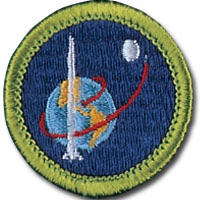SpaceX - Falcon Heavy






Space Exploration Merit Badge Supplementals
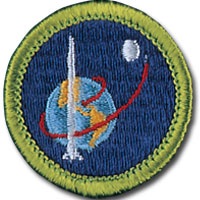

(created Tue. Feb. 6, 2018)
This is an extension of
the Space Exploration Merit Badge page.

The purpose of this page is to show images from the February 6, 2018 SpaceX launch of the Falcon Heavy rocket.
This was the first test flight of this rocket, the one designed to get
people to the Moon or Mars.
It is made of three first-stage Falcon-9 booster rockets.
For this flight the two side boosters were making their second
flight.
Why?
SpaceX’s goal is to get man to Mars. To do that they need to
drive down the cost of spaceflight. To do that they figured out
how to land the booster rockets back on earth, and to then
reuse them for later launches.
The Falcon Heavy launch was successful, launching into space
Elon Musk’s Tesla Roadster. Inside was Starman, a dummy
wearing SpaceX’s space suit. The car contained a Hot Wheel
of the roadster with a mini Starman in it. The car was mounted
on the second stage and on that was attached a plaque with the
names of the 6,000 SpaceX team members whose efforts
culminated with the launch today.
The Tesla is now in an elliptical orbit that varies in distance from
the sun, between the Earth and Mars.
This was an historic mission, returning the US to interplanetary
launch capability.
The two side booster engines successfully landed back at
Cape Canaveral, at Landing Zones 1 & 2 - LZ-1 & LZ-2.
Falcon Heavy image source: http://www.spacex.com/falcon-heavy

Their site best describes the day’s success:
”On Tuesday, Feb. 6th at 3:45 PM ET, Falcon Heavy successfully lifted off from Launch Complex 39A at Kennedy Space Center in Florida. Falcon Heavy is the most powerful operational rocket in the world by a factor of two, with the ability to lift into orbit nearly 64 metric tons (141,000 lb)--a mass greater than a 737 jetliner loaded with passengers, crew, luggage and fuel.
“Falcon Heavy's first stage is composed of three Falcon 9 nine-engine cores whose 27 Merlin engines together generate more than 5 million pounds of thrust at liftoff, equal to approximately eighteen 747 aircraft. Only the Saturn V moon rocket, last flown in 1973, delivered more payload to orbit.”
Source: SpaceX dot com.

As noted by SpaceX in their pre-launch Press Release:
“Three cores make up the first stage of Falcon Heavy. The side cores, or boosters, are connected to the center core at its base and at the vehicle’s interstage. With a total of 27 Merlin engines, Falcon Heavy’s three cores are capable of generating more than 5 million pounds of thrust.
“For this test flight, Falcon Heavy’s two side cores are both flight-proven. One launched the Thaicom 8 satellite in May 2016 and the other supported the CRS-9 mission in July 2016. SpaceX will attempt to land all three of Falcon Heavy’s first stage cores during this test. Following booster separation, Falcon Heavy’s two side cores will attempt to land at SpaceX’s Landing Zones 1 and 2 (LZ-1 and LZ-2) at Cape Canaveral Air Force Station, Florida. Falcon Heavy’s center core will attempt to land on the “Of Course I Still Love You” droneship, which will be stationed in the Atlantic Ocean.
“The payload for Falcon Heavy’s demonstration mission is SpaceX CEO and Lead Designer Elon Musk’s midnight-cherry Tesla Roadster. Demonstration missions like this one typically carry steel or concrete blocks as mass simulators, but SpaceX decided it would be more worthwhile to launch something fun and without irreplaceable sentimental value: a red Roadster for the red planet. Following launch, Falcon Heavy’s second stage will attempt to place the Roadster into a precessing Earth-Mars elliptical orbit around the sun.
“It’s important to remember that this mission is a test flight. Even if we do not complete all of the experimental milestones that are being attempted during this test, we will still be gathering critical data throughout the mission. Ultimately, a successful demonstration mission will be measured by the quality of information we can gather to improve the launch vehicle for our existing and future customers.“
Source: Falcon Heavy press kit

Later that afternoon, Alexa noted in her Science update (“Alexa, what’s your Science update?”) that:
“A Elon Musk’s SpaceX launched their largest Falcon Heavy rocket from Kennedy Space Center on Tuesday afternoon. SpaceX says the payload, a test dummy behind the wheel of Musk’s own Tesla, is now headed into an elliptical orbit between Earth and Mars, where it will quietly await the first interplanetary car collector who cafes to track it down.”
Nice!


This page starts with an overall SpaceX goal, ...
One of SpaceX’s goals is to lower the cost of space exploration by reusing launch vehicles.
Their first successful launch-and-landing of a first stage was on December 21, 2015, when the first stage of the Orbcomm-2 LOE mission landed on the Atlantic Ocean-based “Of Course I Still Love You” landing pad (see also: https://en.wikipedia.org/wiki/Autonomous_spaceport_drone_ship).
Given that was Christmas week, I missed the news until Dec. 26, at which point all four of us watched the rebroadcast of the webcast, together.
Since then I followed the launches, and the first stage landings, as closely as possible, and also share videos of some on another page on this site: http://vanvooren.us/MeritBadges/SpaceX.html.

Links to videos are below, and photos captured on the iPhone 6+ are below these links.
-
1.February 6, 2018 (Falcon Heavy Launch & Live Views of Starman)
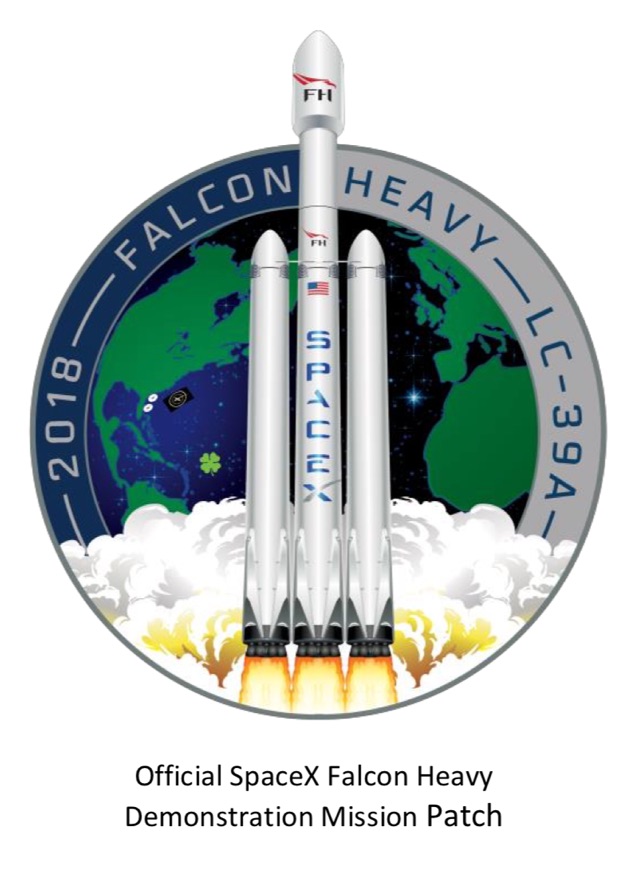
Falcon Heavy Test Flight Hosted Webcast
(53 minute version)
Live Views of Starman - he’s still orbiting, in the Tesla and transmitting back to Earth

These photos... pre-flight image from the Feb. 6, 2018 launch.
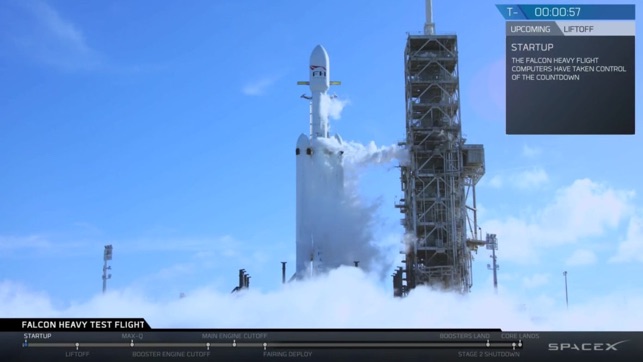
These photos... the launch and climb to orbit.
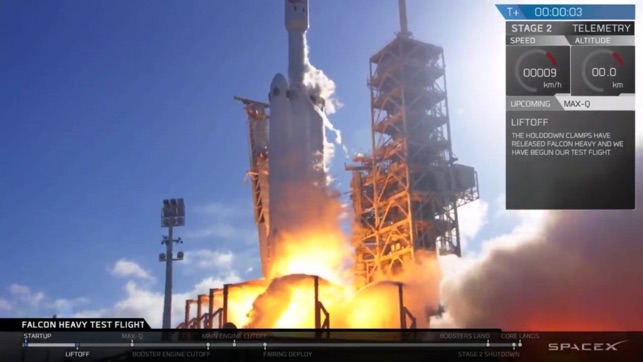
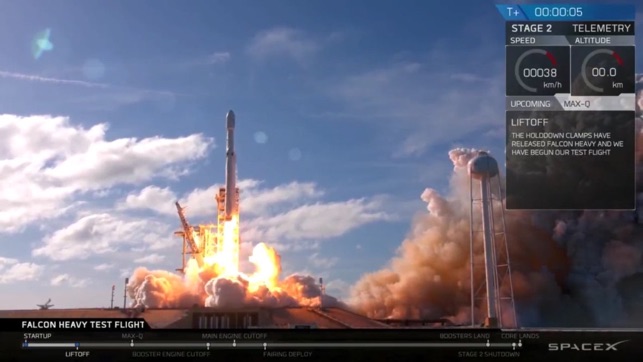
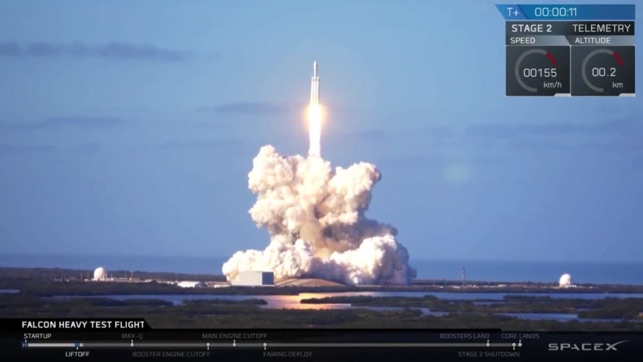
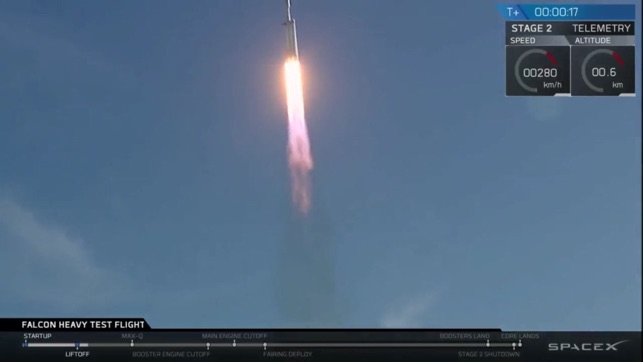
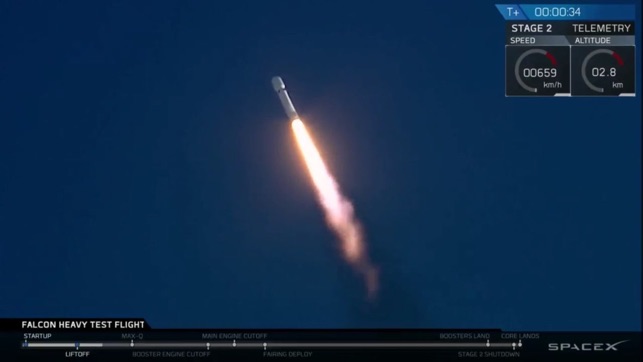
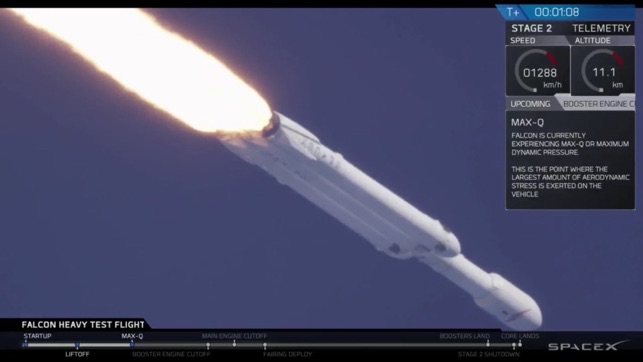
These photos...
Returning to Earth and the simultaneous landing at LZ-1 / Landing Zone 1 & LZ-2 / Landing Zone 2, at Cape Canaveral.
Note how...
... on take-off, the bottom of the first stage was painted fully white...
... and after the initial re-entry burn, still “high up,” the paint is covered with the “soot” from the burned propellant.
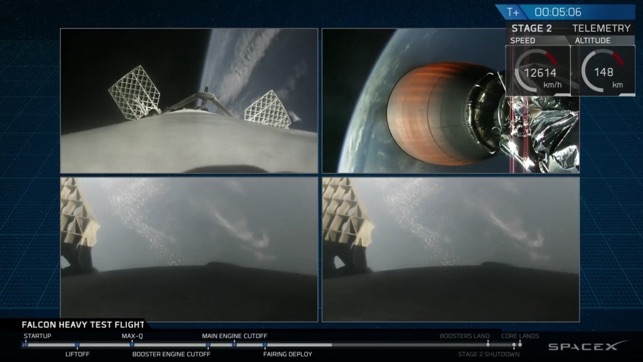
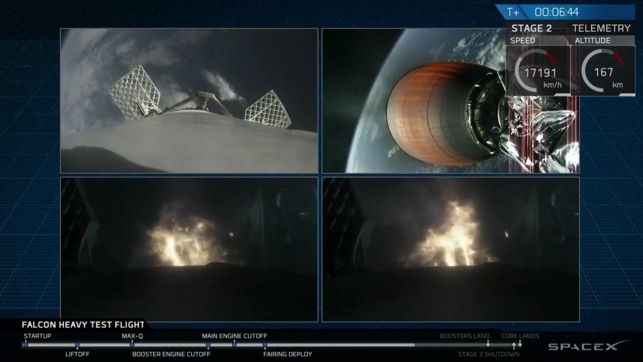
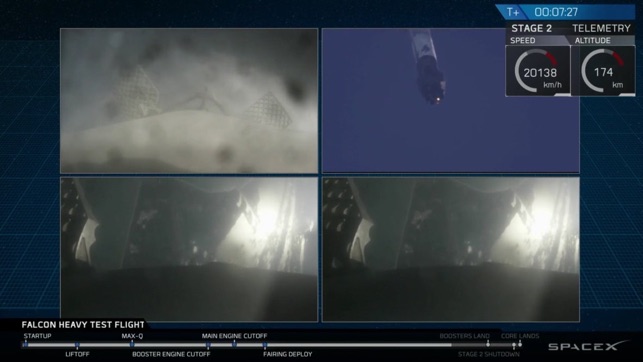
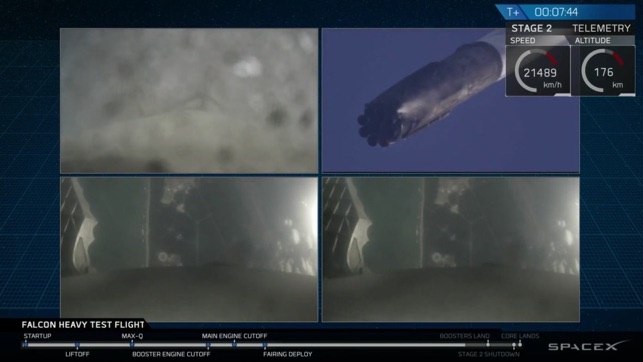
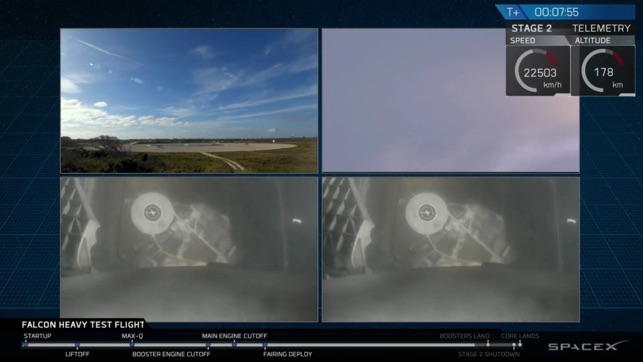
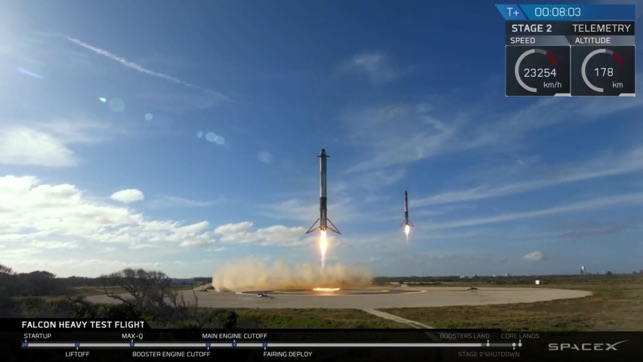
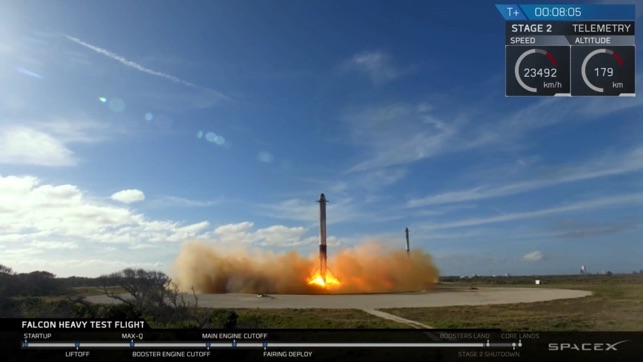
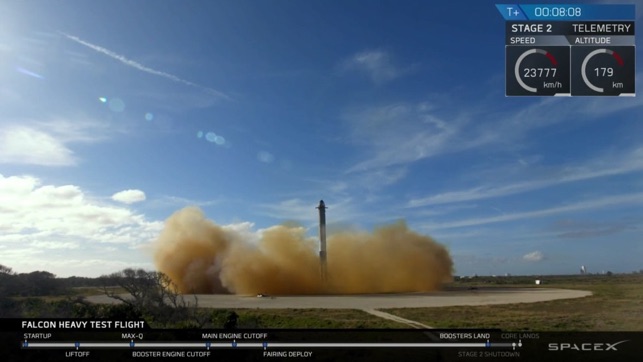
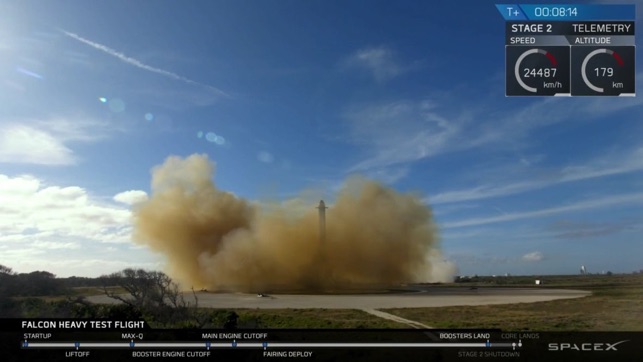
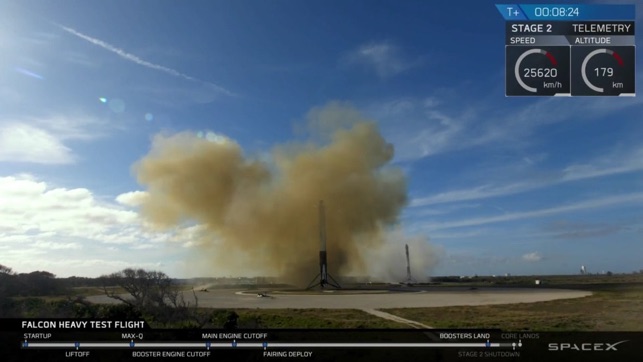
The center core did not land on the drone ship... at this time it is apparent that there was not enough propellant left to slow it down for the landing;
SpaceX founder Elon Musk shared on CBS that the center core apparently hit the ocean at 300 mph, damaging the engines on “Of Course I Still Love You”
“Elon Musk celebrates successful Falcon Heavy rocket launch”
https://www.youtube.com/watch?time_continue=140&v=ROnomVVQ2cU
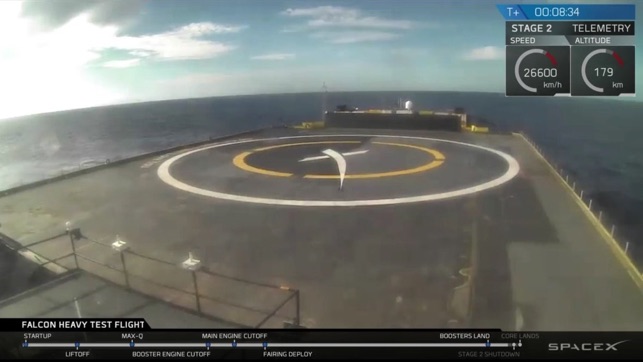
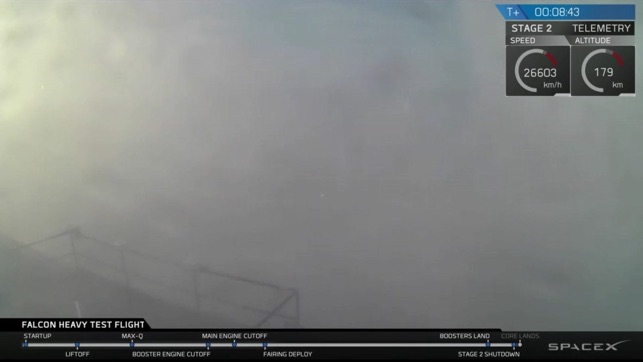
Starman orbiting above the Atlantic Ocean, about 20 minutes after launch
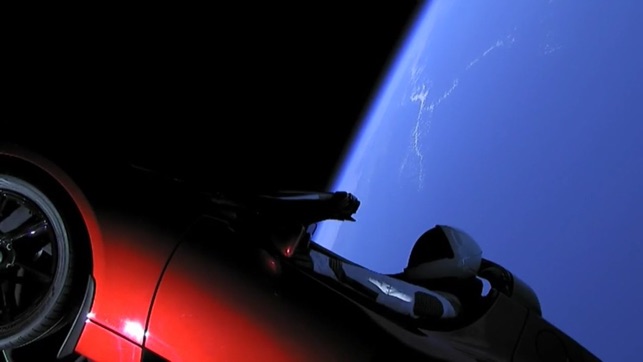
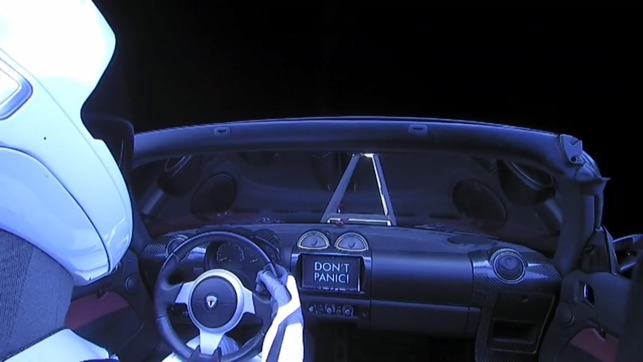
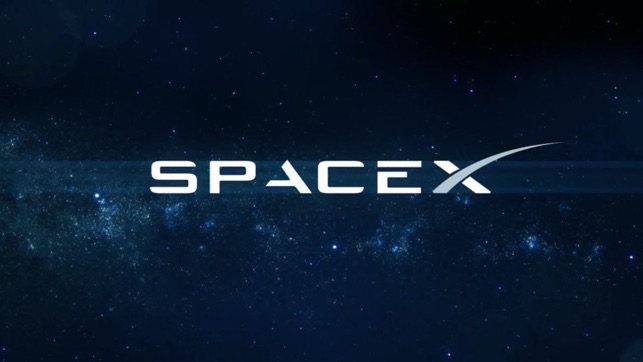
Starman orbiting above the Atlantic Ocean,
at 9:24pm CT, about seven hours after launch
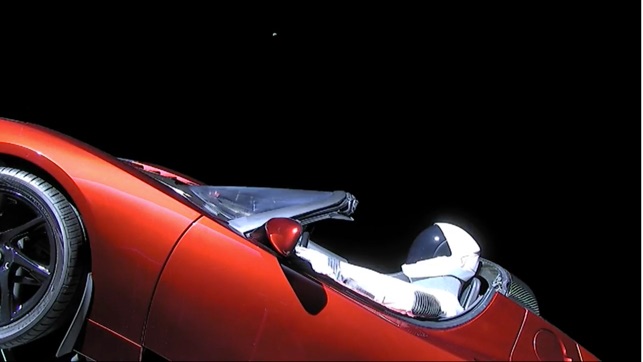



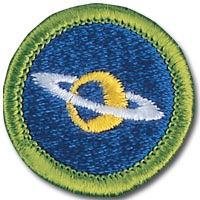
These are all of the links to the Astronomy Merit Badge pages:
Astronomy Merit Badge - Extra “Fun Facts”
Astronomy - Great American Eclipse
Astronomy - Great American Eclipse 2017

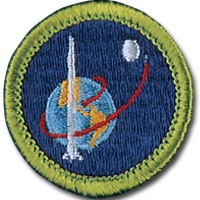
These are all of the links to the Space Exploration Merit Badge pages:
New Horizons - Mission Overview
New Horizons - Pluto Resources


All images were scanned directly from the magazine using the Halo Scanner Mouse - http://shop.halo2cloud.com/collections/computer-and-backup/products/scanner-mouse, which I received as a Christmas present from my mother in 2013.



Regardless your desire to pursue a career in space exploration, it is hoped that you learned enough about exploring space through this merit badge to at least be interested to continuously look up at the sky in awe and wonder, and think about what you may want to explore if you were to go “out there” or were to send a probe “out there.”
If you pursue with enthusiastic interest, that’s great. If you do make a career in the field, GREAT.
May all be better off having completed your Space Exploration Merit Badge than you were before you started.
